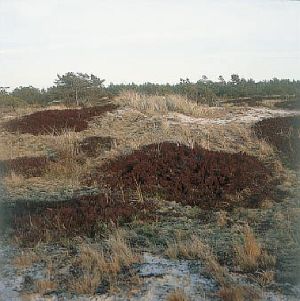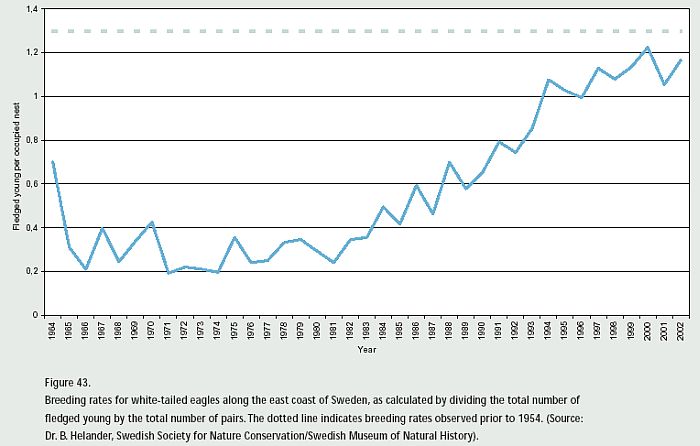Biotopes in need of protection
 There are many unique ecosystems and biotopes around the Baltic Sea which serve as vital breeding grounds, nurseries, shelters and food sources for many aquatic and terrestrial species. Despite the low number of typical marine species, the Baltic Sea still hosts a unique variety of plants, animals and micro-organisms, specially adapted to the brackish-water environment.
There are many unique ecosystems and biotopes around the Baltic Sea which serve as vital breeding grounds, nurseries, shelters and food sources for many aquatic and terrestrial species. Despite the low number of typical marine species, the Baltic Sea still hosts a unique variety of plants, animals and micro-organisms, specially adapted to the brackish-water environment.
The overall assessment of threat to the marine and coastal biotope complexes and biotopes of the Baltic Sea, the Belt Sea and the Kattegat gives cause for concern: over 80 % of all biotopes of the survey area are rated by the experts as dangered, 15 % being classified as "heavily endangered" .
Lagoons including Bodden and Fladas are considered to be heavily endangered biotope complexes while among the heavily endangered biotopes include:
Offshore (deep) waters below the haloclineSublittoral level sandy bottoms dominated by macrophyte vegetation
Grey dunes
Brown dunes with dwarf shrubs
Brown dunes with Natural or almost natural coniferous forest on dunes
Natural or almost natural deciduous forest on dunes (beech, birch forest)
Wet dune slacks, including coastal fens with low vegetation
Salt pioneer swards
Lower meadows
Upper meadows
Tall herb stands
Coastal bogs
Calcareous fens ("rich" fens)
Eutrophic brackish coastal lakes
Mesotrophic brackish coastal lakes
Mesotrophic freshwater coastal lakes
Oligotrophic freshwater coastal lakes
Permanent eutrophic freshwater pools (incl. rock pools etc.)
Permanent mesotrophic freshwater pools (incl. rock pools etc.)


The Red List of Marine and Coastal Biotopes and Biotope Complexes of the Baltic Sea, Belt Sea And Kattegat provides more detailed information and includes also a comprehensive description and classification system for all Baltic marine and coastal biotopes.
Protecting species
The conservation work of HELCOM has contributed to many success stories, including:
The recovery of the white-tailed eagle around the Baltic Sea
The return of the cormorant to the whole region
Early signs of recovery in Baltic wild salmon populations
Increasing numbers of seals in northern areas of the Baltic Sea
But for many species there is still cause for concern:
Nearly all the Baltic’s top predators, such as marine mammals and several bird species, still suffer from pollution, fisheries’ by-catch and habitat destruction
Baltic harbour porpoises are still endangered
The white-tailed eagle
Environmental pollutants have had dramatic effects on white-tailed eagle (Haliaeetus albicilla) populations. Cumulative amounts of DDT, PCBs and other pollutants earlier led to severe reproductive problems, as indicated by the thinning of the birds’ egg shells. But since these chemicals were banned through HELCOM initiative, white-tailed eagles have been able to feed on uncontaminated meat and fish, and their reproductive success rates have duly improved to almost natural levels (see figure below). According to the WWF, white-tailed eagles bred well in Finland in 2002, when 192 eaglets were hatched. But another continuing threat to the white-tailed eagle is habitat loss as a result of the widespread adoption of modern forestry methods.
Marine mammals
Only four marine mammal species live and breed in the Baltic Sea, including three seal species and the harbour porpoise – a small whale.
Harbour porpoise populations decimated over the 20th century
The only cetacean regularly found in the Baltic is the harbour porpoise (Phocoena phocoena). At the beginning of the 20th century between 10,000 and 20,000 porpoises lived in the Baltic Proper, and ranging as far as the eastern Gulf of Finland and the Bothnian Bay. Porpoise populations have decreased drastically due to hunting, periodic catastrophic mortalities associated with severe winter ice conditions, pollution, disturbances such as noise, and deaths caused by fishing equipment.
Today the population in the Baltic Proper is estimated to number only some 600 individuals, and the species seem to be completely absent from the northern and easternmost parts of the Baltic Sea. In the Skagerrak and Kattegat, however, there are about 36,000 individuals, and this population is important on the European scale.
Between 1999 and 2001, 206 dead harbour porpoises were reported to HELCOM from around the Baltic, including 113 caught up in fishing equipment.

For more information about threatened species and their protection in the Baltic Sea area, visit the HELCOM Baltic Sea Protected Areas Database.

